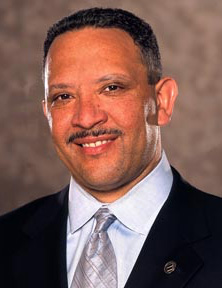
Nation’s governors and mayors admirably step in to fill the leadership vacuum left by president’s failure on coronavirus crisis

Marc Morial
“We’re all competing against each other. This should have been a coordinated effort by the federal government, and the national defense authorization that the president has to essentially push this manufacturing really hasn’t gone into effect in any way. And, so, yes, we’re competing against each other. We’re competing against other countries. It’s a … Wild West, I would say, out there.” – Illinois Gov. J.B. Pritzker
When I was mayor of New Orleans, I was called upon to lead my city through troubled times. I confronted a crisis of violent crime, I worked to keep my city safe during natural disasters. I often relied on support from the Governor and the President.
One of the worst national crises in American history struck during my mayoral tenure, on Sept. 11, 2001. As Preside of the U.S. Conference of Mayor, I was proud to support the President. I led the effort to create a National Safety and Security Plan for American Cities, including the recommendation for a Department of Homeland Security, and the federalization of airport security screens.
Now, the coronavirus pandemic has turned these traditional relationships between local, state and federal leadership upside down. President Trump appears more concerned about his reelection prospects than the rampant spread of a deadly disease, forcing the nation’s governors and mayors into unprecedented roles.
On a conference call with governors, who pleaded with President Trump for help in acquiring lifesaving medical supplies like ventilators, the President told them to find the equipment themselves – even as the federal government was outbidding the states who were trying to purchase it.
Massachusetts Governor Charlie Baker told President Trump that his state lost out to the federal government three times on purchases of critical supplies.
President Trump laughed.
As the President has faltered, governors and mayors have risen – most notably, New York Governor Andrew Cuomo, whose state has been the hardest-hit. Governor Cuomo’s orderly, informative briefings – with everyone present observing recommended social distancing – stand in stark contrast to President Trump’s rambling, contradictory briefings marked by misinformation and angry attacks on journalists.
A few days after President Trump stunned the public by saying, “I don’t take responsibility at all” for the nation’s lag in testing, Governor Cuomo firmly took responsibility for closure of non-essential businesses. “If someone wants to blame someone, blame me,” he said. “There is no one else responsible for this decision.”
Ohio Governor Mike DeWine was far ahead of the curve on ordering school closures and banning large gatherings to prevent the spread of the virus. Michigan Governor Gretchen Whitmer – before a single case of coronavirus had been identified in her state – announced the creation of special task forces and developed a plan for free testing and treatment.
By the time President Trump finally called a national emergency on March 13, the nation’s mayors had been fighting the battle in their towns and cities, unassisted, for weeks. Even as Florida Governor Ron DeSantis resists a statewide shelter-in-place order, Miami Mayor Francis Suarez – who has tested positive himself – canceled large gatherings and closed bars and restaurants.
Seattle Mayor Jenny Durkan, whose city was one of the first to be struck, was quick to ban utilities from cutting services and ordered a moratorium on residential evictions for non-payment of rent.
San Francisco Mayor London Breed – an outspoken critic of President Trump’s crisis response – was among the first in the nation to issue a widespread stay-at-home order.
Now President Trump, in defiance of medical experts, wants to end the social distancing efforts that are our only hope to contain the virus. It will, once again, fall to the governors and the mayors to provide the sensible leadership that the President will not.






